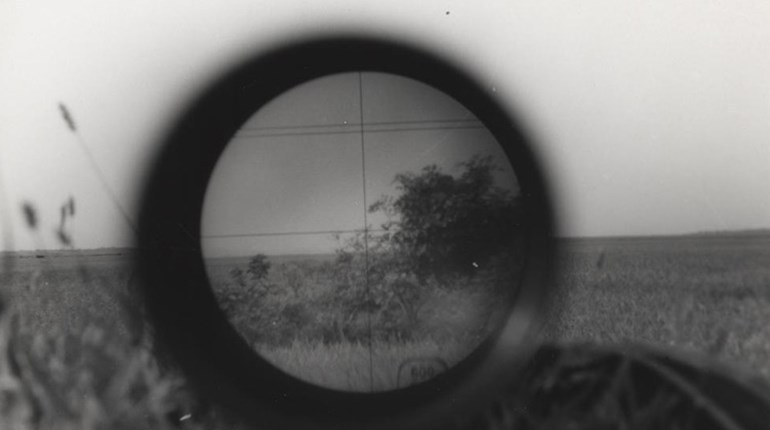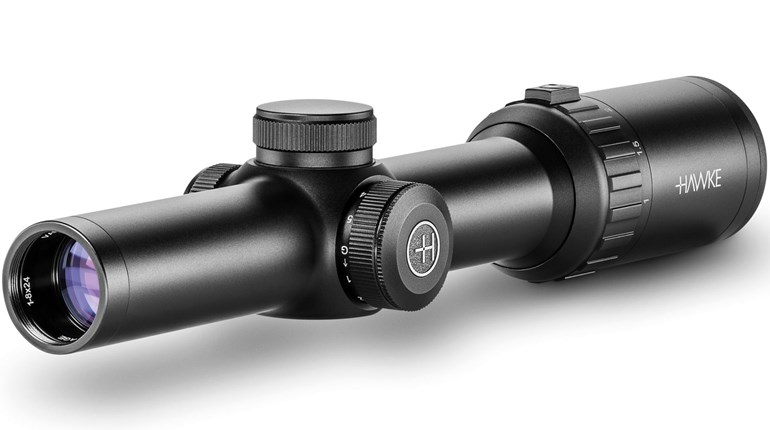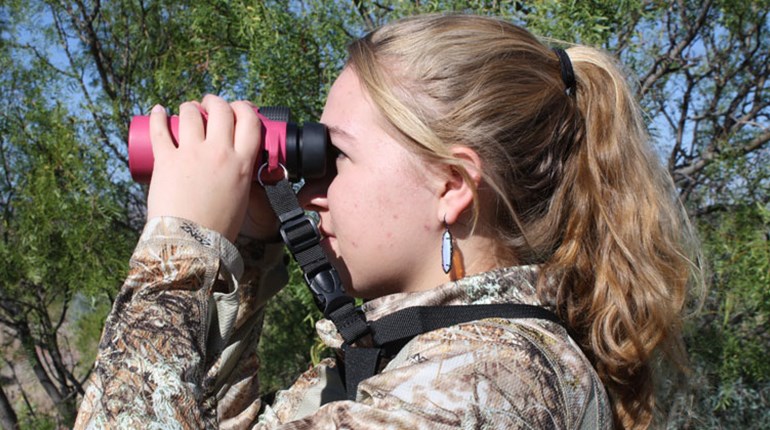
Though many of us aren’t quite sure how to pronounce it, Swarovski is now a household name in hunting households. That’s remarkable given that the brand was practically unknown just 20 years ago, and even today a lot more American hunters are Swarovski fans than actually own one. There’s just one reason for that—price—and if a bonafide Swarovski optic could be had for $500 or thereabouts, almost all of us would be owners.
Last year Swarovski introduced a modernized version of its long-running SLC binocular, and while it’s hardly inexpensive at $2,129, that price is somewhat better than the company’s flagship EL glass, which brings nearly $2,500 (suggested retail). Last fall, in an effort to sort out how the new SLC 42 HD compares to the EL and other prestige binoculars, I relied on it for hunting, wildlife watching and attending sporting events.
If not for the banging against my keyboard, I might even consider making it part of my daily apparel—sure would be more useful than a necktie. At 28 ounces, it carries easily and is right in line with today’s slimmed-down top-end binos. Compared to its forerunner, the new SLC is slightly shorter and trimmer, yet provides a wider field of view—408 feet at 1,000 yards from the 8x42 model, or 330 feet @ 1,000 yards from the 10x42. That holds true even for those who wear eyeglasses thanks to a generous exit pupil distance and twist-lock eyecups adjustable in three stages.
The improved SLC also benefits from a switch to what the company calls “fluoride-containing HD glass.” This new glass, similar to what comes in the Swarovski EL and other alpha brands, translates to thinner, lighter lenses. Better yet, the optical quality of these slenderized lenses is the best in the business. Adding trace amounts of fluoride helps to correct chromatic aberration (CA), which essentially results in an inability to transmit images precisely as the colors separate when refracted by glass. Swarovski’s HD glass all but eliminates CA, which we see as fuzzy single-color fringes around objects in the field of view. However, when all color bands are transmitted in perfect synchronization, the objects are wonderfully sharp and true to life, and that sure was the case with the new SLC HD glass.
Brightness has been Swarovski’s forte ever since it stormed the American sports-optics marketplace in the early 1990s, and more than anything it was that attribute that won over legions of big-game diehards who “live” in their binos for hours on end. Brightness is not simply the end-product of the type or quality of the glass itself, but is also governed by the coatings used to treat the surfaces of the lenses and internal prisms, and by how light is managed within the instrument. For its top-line products including the EL and SLC HD binoculars, the company now uses a series of proprietary coatings, namely SWARODUR, SWAROTOP and SWAROBRIGHT.This combination is helping to keep the Austrian firm squarely on top in a very competitive race to optical brilliance, which typically is the first and foremost observation from what now is a full generation of impressed hunters. The additional SWAROCLEAN anti-stick coating on outer lens surfaces is intended to make them easier to maintain.
The focusing mechanism has also been revamped. The large, central wheel is fluted to promote sure-handed control even in wet or frigid conditions or when the user is wearing gloves. The feel is notably silkier than is normally the case in a European optic. Stiffer resistance makes it less likely that you’ll overshoot the sweet spot while dialing in a distant object, and generally that is my preference. Not everyone shares that preference—in fact the best Japanese binoculars tend to have a lighter, smoother-feeling action—and regardless, I had no troubles working it to my satisfaction. And when you do hit optimum focus—voila!—the image is virtually 3-D distinct.
A magnesium housing encased in a textured, rubber-like jacket ensures the SLC HD is ruggedly built to keep working for who knows how long. It is nitrogen-purged and guaranteed waterproof to 13 feet, and while I didn’t take it diving, I did hunt without a blip in temperatures ranging from 0 to nearly 100 degrees and in all-day driving rain. The binocular’s configuration is a modified take on the open-bridge design pioneered by the EL. Many users, especially those with large hands, love being able to wrap their fingers all the way around a bino’s ocular barrels. Initially there was concern that the EL’s small hinges might not be strong enough to maintain collimation (precise alignment of the two barrels) in hard use, but I’ve heard zero complaints about that from any of the dozens of professional guides I’ve encountered who were employing ELs in their work.
However, if that is a concern, the SLC HD boasts a more substantial, 1 3/8-inch hinge. Positioned toward the rear, it allows the full-finger-wrap treatment for nearly 2½ inches at the front.
We could go on explaining how this new Swarovski is able to deliver tremendous brightness and clarity in such a compact, durable unit, but I’d rather share some examples of what make great binoculars so addictive to me.
-Like seeing in the pre-dawn a horizontal line in a sea of vertical papyrus, a detail that turned out to be the backline of a sitatunga bull.
-Like being able to discern the difference between droplets of sweat and blood on an NFL lineman’s face.
-Or, most amazing, watching a Cooper’s hawk repeatedly—15 minutes at least—pulling the leg tendons of a dead squirrel through his beak as if it was using them as floss.
Those are just a sampling of the kinds of priceless images that help make us hunters for life, and why our binoculars are so very important to us. But of course there are real limits to what we can spend. So to repeat what I’ve previously written in these pages, the justification or lack thereof for me comes down to how much I’ll actually use a given tool. If your hunting, scouting and other uses average out to a couple hundred times a year and you amortize that over 30 years, then your bino is costing you 30 cents or less every time you pick it up. That may not make the initial outlay any easier, but it does clarify the math. I know if I owned the Swarovski SLC HD we were loaned for testing, it would never be far from reach.
Specs:
www.swarovskioptik.com
Type: roof-prism binocular
Magnification: 8X and 10X (tested)
Objective Lens Diameter: 42mm
Focus Range: 6' to infinity
Field of View at 1,000 yds.: 8X, 408'; 10X, 330'
Weight: 8X, 28.5 ozs.; 10X, 28 ozs.
Length: 8X, 5.85"; 10X, 5.65"
Coatings: fully multi-coated lenses and phase-coated prisms
Construction: magnesium chassis in rubberized armor coating
MSRP: 8X, $1,999; 10X, $2,129



































